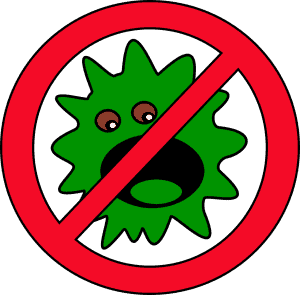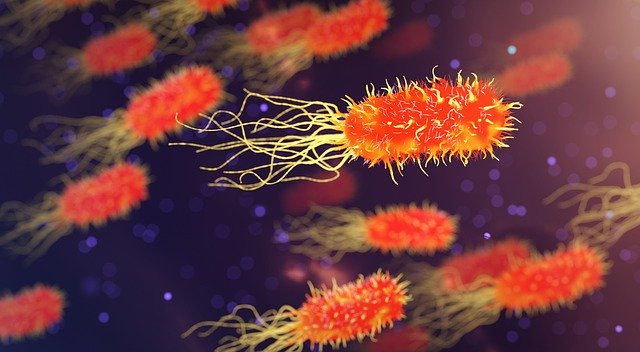Strange times have befallen humanity as it collectively fights the novel pandemic across the world (at the time of writing this article).
At the same time, novel ideas and solutions are generated by laymen and experts.
One such solution involves using LEDs to treat germs on surfaces, in the air, and in water.
Standard LEDs do not kill germs. Purpose built sanitizing LEDs have the capability of effectively sanitizing surfaces and water, ridding them of deadly bacteria, germs and in some cases, viruses.
What LED Light Kills Bacteria?
LEDs are not just for illuminating your home and offices.
Shining certain colored LED lights on surfaces can kill germs, bacteria and other pathogens, depending on each use case. When using an antimicrobial light, any surface that one can see lit up, and is illuminated means it is being sanitized.
Various colors of LED bulbs have different effects:
White: Special white LEDs have the capacity to kill bacteria, mold and fungi, at the same time it does not harm people, plants or pets. So, for example, hospitals can use them throughout the day without people needing to vacate.
Blue: Intensified blue light is another colored light that has been proven to kill certain bacteria like E. Coli, Listeria bacteria and deactivate MRSA virus.
Violet: While separately red LED and blue LED will both kill bacteria, the best kind of LED light is one that combines red and blue LED light.
LED lights also come as UV (ultra-violet) emitters. UV-LEDs are a possible alternative for replacing traditional UV light sources.
As opposed to conventional UV sources, UV-LEDs are more environmentally friendly as they do not contain harmful mercury, do not produce ozone, and consume less energy.
The use of UV-C LEDs is rapidly growing in situations where germicidal treatment is required (UVGI) for air, surface, and water purification.
Traditional sources of UV are quite harmful for human eyes, and when places like hospitals need to be sanitized, people have to vacate the area. UV light traditionally produced through mercury-vapour lamps can lead to rapid auburn or in extreme cases, skin cancer.
Various UV Wavelengths
UV represents wavelengths that fall between visible light and x-ray on the electromagnetic spectrum. The UV range can be further divided into UV-A, UV-B and UV-C.
- UV-A: Called near-UV or black light, UV-A has a wavelength in the range from 315 nm to 400 nm.
- UV-B: This is the medium wave light and has a wavelength in the range from 280 nm to 315 nm.
- UV-C: This segment of UV also known as short wave UV light and has a wavelength in the range from 200 nm to 280 nm.
It is the UV-C wavelength that is used in LED disinfection products. In particular, the wavelength of 264 nm is incredibly impressive at killing germs, viruses, and bacteria.
Here’s how it works:
UV-C wavelength damages the nucleic acid of microorganisms and damages their DNA. It penetrates the cells, making them incapable of reproduction and biologically inactive.
This photo-activation process also occurs in nature since the sun emits UV rays that have this effect as well.
Fortunately, UV-C radiation can pass through air without creating ozone, so UV-C lamps can also be used in air to disinfect surfaces.
Only the vacuum-LED wavelengths can create ozone (<200 nm). UV-A, UV-B, and UV-C wavelengths do not transform oxygen (in the air) into ozone, which causes breathing issues for people around the area.
Does UV Light Kill Viruses?
Bacteria and viruses are both known to cause illness in the human body. But did you know, they differ in certain ways? Here’s how:
Viruses are not living organisms. To grow, they need living cells or tissue, such as the inside of a human body.
Bacteria, on the other hand, can survive outside the human body as well and are found in dirt, food, and around the house.
Viruses are much smaller than bacteria, sub-microscopics, and therefore harder to filter and catch in fabric masks.
Bacteria can be treated by antibiotics, and as you might know already, you definitely need to finish the entire course of the medicine for it to be effective.
Viruses, on the other hand, cannot be treated by antibiotics.
And finally, some viruses you may recognize are the COVID-19, the regular flu, polio, measles, and AIDS. Bacterial infections, on the other hand, are pneumonia, tuberculosis, and the dreaded food poisoning.
Generally speaking, UV light can kill almost everything: bacteria, fungi, viruses. It is effective against viruses like the flu.
The International Ultraviolet Association (IUVA) have informed the public that there are no protocols to permit the use of UV light directly on the human body at the wavelengths and exposures proven to efficiently kill any viruses.
Keep in mind that traditional UV light under the conditions known to kill viruses are also known to cause severe skin burns, and eye damage.
Can UV LED Light Kill Bacteria In Water?
Certain companies, like AquiSense, use Light Emitting Diodes (LEDs) to generate high levels of UV-C photons.
The rays are directed at viruses, bacteria, and other pathogens within the water.
Similarly, bottle companies manufacture special reusable drinking water bottles with a UV-C LED chip to filter the water inside the bottle.
It zaps the water for around 60 seconds, and 99.999% of bacteria and viruses can be neutralized.
For example, a UV bulb is submerged in a fish tank that keeps it free of pathogens and mold. The UV-C is absorbed by the germs inside the water, sterilizing it.
Fortunately, the water itself is not harmed by the UV-C and does not leave any kind of residue behind.
In fact, using the UV LED sanitization products seems to improve the drinking water taste for a lot of these products.
In other applications, how quickly the germs are killed depends on the light intensity and the time of exposure to the UV-C light.
Low-intensity light for an extended period or high intensity for a short period work similarly.
Also, the effect of the UV-C wavelength decreases as the distance from the lamps increases.
As an average, a regular bacterium will be killed in ten seconds at a distance of six inches from the UV lamp.
Final Words
Remember, there is no alternative for washing your hands with soap and water for a good 20 seconds, at least.
But LED alternatives on the market can help make life a little easier.
Have you considered buying a UV-C light for sterilization purposes?
Do you have any light-based sanitation devices at home?
Looking for an LED bulb but not sure what type you need?
Check out my free bulb picker and select the right bulb within few clicks.




